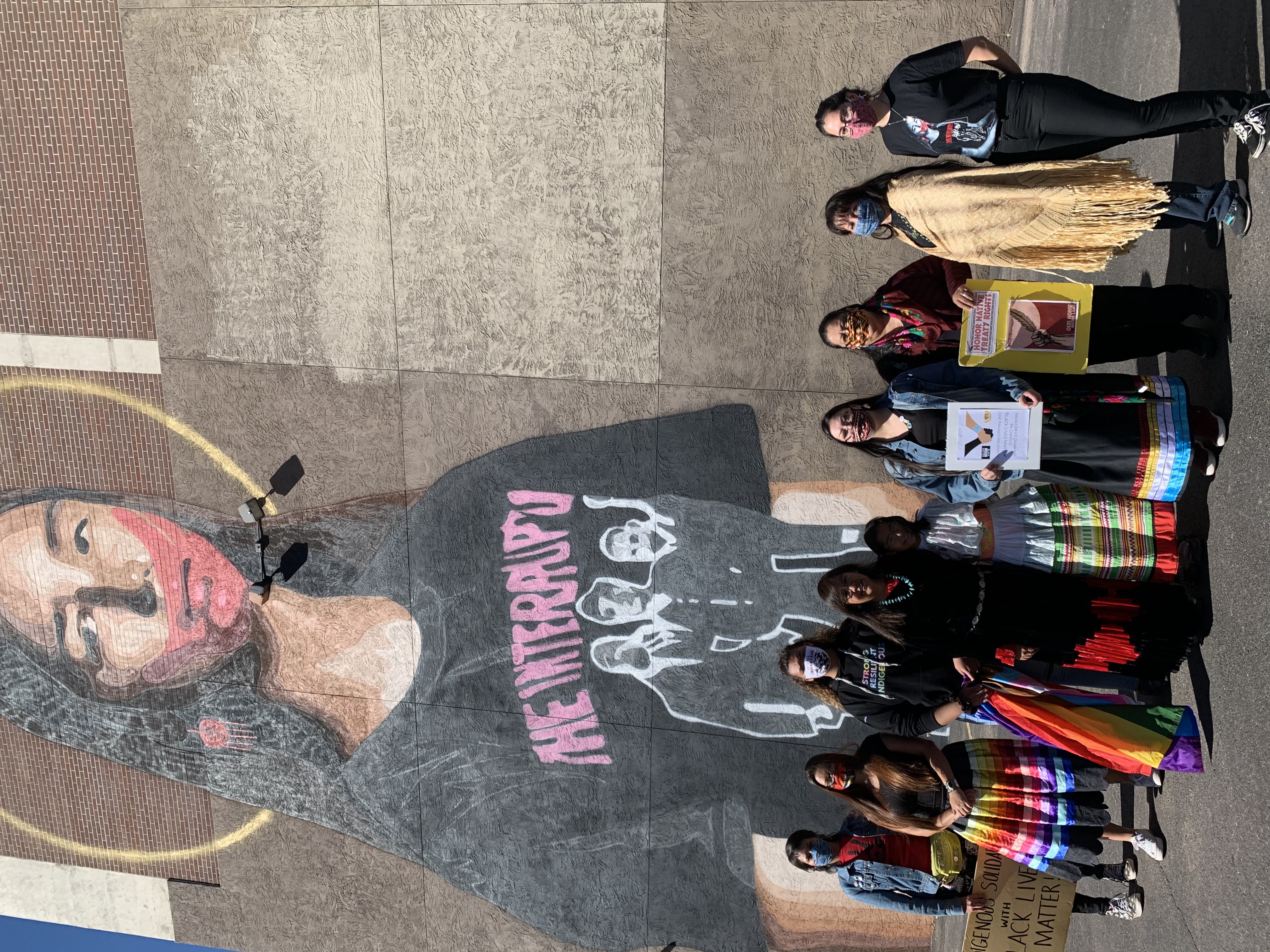
Story
The Crisis Affecting Indigenous Women
Indigenous women face some of the most shocking statistics of violence of any group. Monycka Snowbird shares the historical trauma that haunts Indigenous women to this day.
Recently we have witnessed some important milestones in achieving increased visibility of Indigenous people in mainstream media with the national coverage of mascot changes, the election of Native representatives, and awareness related to the Missing and Murdered Indigenous Women (MMIW) or the more inclusive, Missing and Murdered Indigenous Relatives (MMIR) crisis across our country. This representation impacts the way we address a multitude of issues that Native people face in a very intersectional way, specifically related to our safety.
This crisis has deep historical roots. The first documented case of trafficking of Indigenous women came from a letter written by Christopher Columbus in 1500. He wrote to Doña Juana de la Torre, a nurse in the court of Queen Isabella, that “A hundred castellanos are since easily obtained for a girl and there are many dealers who begin to locate girls; those from nine to ten are actually in highest demand.” The legacy of those first documented instances of trafficking has had lasting effects on Indigenous people today, especially for our women.
I have the honor of working with Indigenous survivors in Colorado Springs at Haseya Advocate Program, which is currently the only urban Indian response to domestic violence and sexual assault in Colorado. In my work as an advocate, I witness the resiliency of our people every day. I watch as Indigenous women overcome hardships and atrocities that would be debilitating for so many. I see survivors heal through culturally centered support and our traditional teachings. There is a saying attributed to the Cheyenne people that a nation is not conquered until the hearts of its women are on the ground. I believe this is how our people have remained strong and will continue to thrive, because Indigenous women are indomitable.
This past summer, Haseya was able to collaborate with local artist Gregg Deal during the installation of his mural, Take Back the Power, the largest MMIW/R awareness mural in the country. While he painted, we helped to educate people on why the topic of this mural was so significant to Indigenous people. The media coverage related to his artwork has provided additional exposure for Haseya as well.
Many Indigenous women come from communities with issues secondary to historical trauma such as poverty, high suicide rates, substance abuse, and child welfare involvement, which traffickers believe make them more vulnerable and easy targets. Many reservations are also located in close proximity to the operations of extractive resource industries, such as natural gas, oil, and mining. The “man camps” that house workers at these sites drastically and suddenly increase the populations of rural areas and become a significant strain on local infrastructure, specifically for law enforcement. Crime rates, including prostitution and trafficking, tend to increase in proximity of these camps. A number of reports show direct correlation between man camps and sexual violence against Indigenous women. Or, as many advocates see it, violence against the land results in violence against our women.
Indigenous women face some of the most shocking statistics of violence of any group. According to the National Congress of American Indians, Native American women are murdered or go missing at a higher rate than any ethnic group in the United States, four out of five Native women will experience violence within their lifetime, more than half of Native women will experience sexual assault or domestic violence, and 96 percent of that violence is at the hands of a non-Native perpetrator. Due to this disproportionate violence, the Title IX—Safety for Indian Women bill was included in the 2013 reauthorization of the Violence Against Women Act (VAWA). Up until its passage, there were little-to-no consequences for intimate partner violence committed by non-tribal members on tribal land.
In addition to VAWA protections, recent legislative steps have been taken to protect Indigenous women. The Not Invisible Act was passed in 2019 to require that the Department of the Interior must designate an official within the Bureau of Indian Affairs to coordinate prevention efforts related to MMIR and human trafficking of Indians. Savanna’s Act (named for Savanna LaFontaine-Greywind) was just passed in 2020 to require the Department of Justice to develop law enforcement and justice protocols to address the MMIR crisis. Due to the lack of tracking by many law enforcement agencies and common cultural misidentification, we do not have an accurate number of how many MMIR there currently are, but MMIWUSA states there are more than 9,000 in their database. I am hopeful that with the new legislation, combined with a growing sense of urgency both at the state and national levels, we will see some of these rates decline. Lives literally depend on it.
This article is part of a series through a partnership with the Colorado Commission of Indian Affairs to elevate Indigenous perspectives and reflections. For more in The Colorado Magazine:
Vision and Visibility
Kathryn Redhorse, director of the Colorado Commission on Indian Affairs, reflects on 2020 as a potential turning point in American Indian and Alaska Native communities’ long struggle for visibility, acknowledgment, and social justice.
Collective Loss, Collaborative Recovery
Ernest House, Jr. (Ute Mountain Ute) comes from an extremely long line of environmental stewards. In times of environmental disaster like Colorado’s wildfires of 2020, he sees opportunities to work together. “The threats to our lands are intertwined, but so are the benefits of protecting them,” he notes.
Gregg Deal's Take Back the Power mural can be viewed in Colorado Springs at 3 N. Tejon Street. A wide selection of his work is on view at the History Colorado Center in Downtown Denver through July 16, 2021, in his Merciless Indian Savages exhibition. You can also hear Gregg speak on the topic of "Art and Democracy" at the History Colorado event on May 12, 2021.

